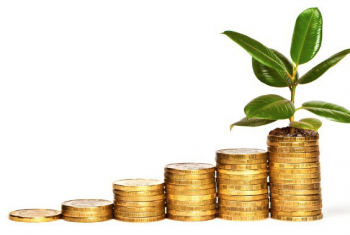
3 things to look for in corporate capital policy
As Australians we tend to have a strong attraction to the humble dividend. If our current markets are anything to go by, some investors may have chased yield whilst having thrown caution to the wind.
Dividends in particular situations may be paid at the detriment of future growth. If you invest $10 in a business and it produces you $2 profit a year, you might consider this a very good return (20 per cent). But if by letting this business keep the $2 and reinvesting it in its operations for several years (continuously generating 20 per cent returns on each contribution), a much greater income can be produced in future.
There are also circumstances where it pays for the investor to demand that his returns be fully paid out as dividends, namely when the returns that could be potentially earned on those reinvested profits are lower than what could be achieved by investing elsewhere. Very simply, if the business could only generate returns on 1 per cent on any further reinvestment then the investor could look for another business to invest in.
Our last musing on capital policy is the share buyback. A company may issue shares to finance some part of their business but a buyback is the reverse; shares are bought back by the company with its own cash. Shareholders are rewarded either through accepting the price offered or holding onto their stock and effectively gaining a higher ownership stake in the company.
As an example, let’s say you own 5 per cent of a company and it elects to buy back half its stock on issue. Assuming you hold your shares, your shareholding in the company will increase to 10 per cent (and you’ll expect to receive 10 per cent of all future profits as opposed to 5 per cent before).
This sounds great, however the price at which the shares are bought back must also be considered. A rational company buying back its own shares will need to take into account the intrinsic value of that share, the same as any investor. For the remaining shareholders, overpaying will destroy value and paying a discount will create value.
This then leads to the question “how do we determine the value of a stock?” Well that’s a much longer blog post…
Scott Shuttleworth is an analyst at Montgomery Investment Management. To invest with Montgomery, find out more.
This post was contributed by a representative of Montgomery Investment Management Pty Limited (AFSL No. 354564). The principal purpose of this post is to provide factual information and not provide financial product advice. Additionally, the information provided is not intended to provide any recommendation or opinion about any financial product. Any commentary and statements of opinion however may contain general advice only that is prepared without taking into account your personal objectives, financial circumstances or needs. Because of this, before acting on any of the information provided, you should always consider its appropriateness in light of your personal objectives, financial circumstances and needs and should consider seeking independent advice from a financial advisor if necessary before making any decisions. This post specifically excludes personal advice.
INVEST WITH MONTGOMERY
John E
:
Challenger had a buyback for quite a while when they thought their shares were cheap. As soon as the share price increased substantially, they stopped buying.
This is a great example of companies doing the right thing by their shareholders.
Dean Bourke
:
Define, minimum [acceptable] Return on Equity (ROE)
If, reinvesting earnings does not reduce ROE below minimum [acceptable] levels. Then, reinvest earnings. Else, pay dividends
Roger Montgomery
:
Above the cost of capital at a minimum Dean.